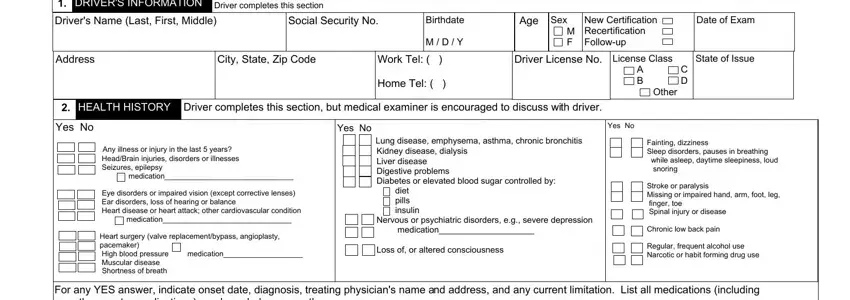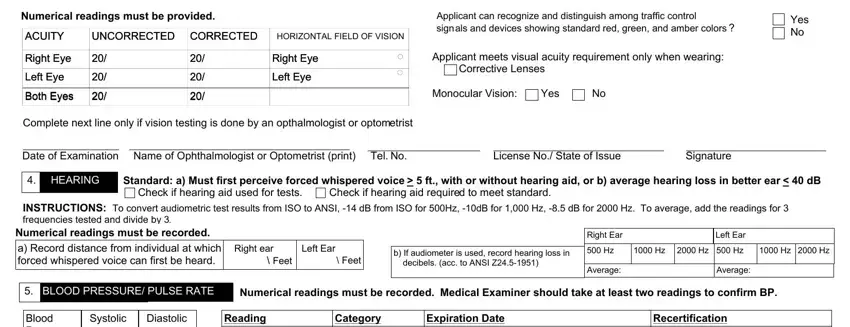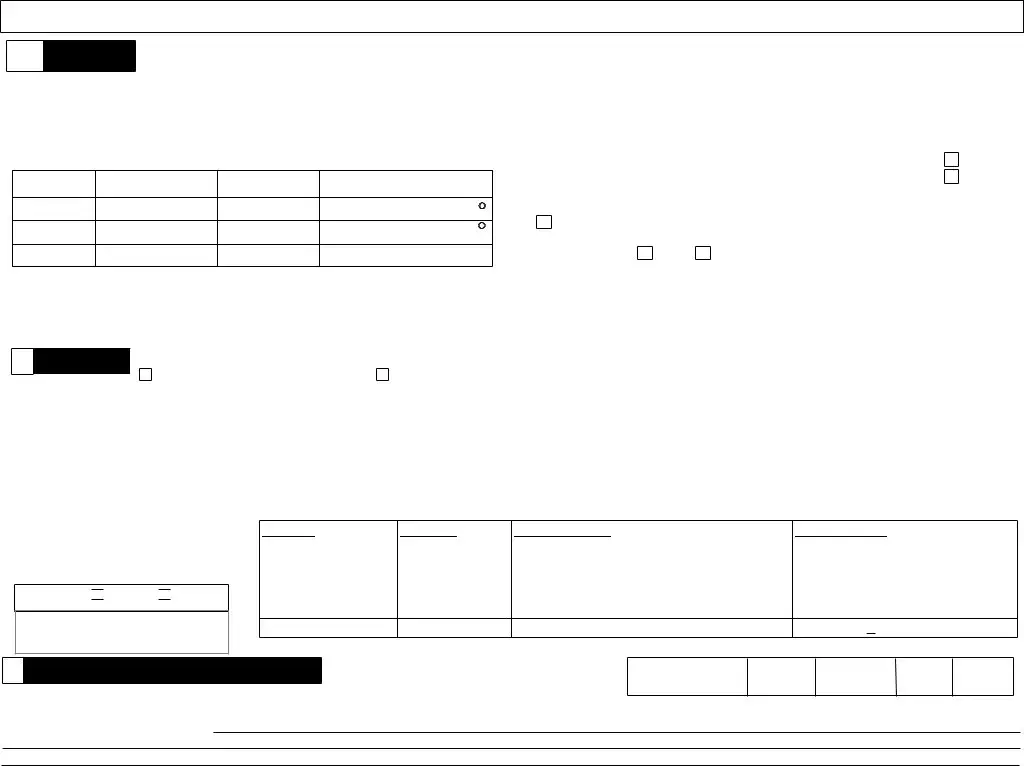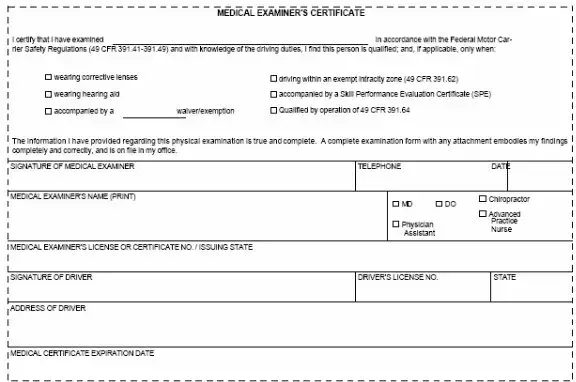We have applied the hard work of the best developers to create the PDF editor you are about to make use of. Our software will assist you to fill out the dot physical forms form with ease and don’t waste time. What you need to do is try out these easy-to-follow actions.
Step 1: To begin with, pick the orange "Get form now" button.
Step 2: Now you are on the file editing page. You may edit, add content, highlight particular words or phrases, put crosses or checks, and include images.
The PDF template you decide to create will consist of the following sections:

Type in the appropriate details in For any YES answer indicate onset, I certify that the above, Drivers Signature, Date, and Medical Examiners Comments on area.

The software will request information to conveniently fill up the section Numerical readings must be provided, ACUITY ACUITY, CORRECTED UNCORRECTED CORRECTED, HORIZONTAL FIELD OF VISION, Applicant can recognize and, Yes No, Right Eye Right Eye, Left Eye Left Eye, Both Eyes Both Eyes, Right Eye Right Eye, Left Eye Left Eye, Applicant meets visual acuity, Corrective Lenses, Monocular Vision, and Yes.

The Blood Pressure, Reading, Stage, Expiration Date year, Driver qualified if Pulse Rate, Irregular, Stage, Onetime certificate for months, Recertification year if Onetime, Stage, months from date of exam if, months if, LABORATORY AND OTHER TEST FINDINGS, Numerical readings must be recorded, and SP GR box may be used to identify the rights and obligations of both parties.

Fill in the document by taking a look at these areas: PHYSICAL EXAMINATION, Height, in Weight, lbs, Name Last, First, Middle, The presence of a certain, Check YES if there are any, BODY SYSTEM General Appearance, CHECK FOR Marked overweight tremor, Eyes, Ears, Mouth and Throat, and Pupillary equality reaction to.

Step 3: After you've selected the Done button, your document is going to be ready for upload to each electronic device or email you indicate.
Step 4: Prepare a duplicate of each document. It can save you time and allow you to stay away from worries down the road. Also, the information you have isn't going to be shared or viewed by us.




 Regular
Regular 
 Irregular
Irregular



